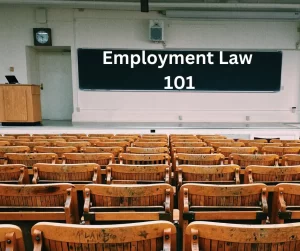
What is the definition of the term “pleading“? Here’s my point of view.
(IMPORTANT: This article is for informational purposes only and is based upon my point of view. Due to the rapidly changing nature of the law, we make no warranty or guarantee concerning the accuracy or reliability of the content in this article. No content on this site, regardless of date, should ever be used as a substitute for direct legal advice from your attorney. Please review our Disclaimer|Terms of Use|Privacy Policy before proceeding.)
INTRODUCTION: PLEADINGS
Within the legal profession, the term “pleading” stands as a fundamental cornerstone that shapes the trajectory of legal proceedings. Rooted in centuries of legal tradition and jurisprudential evolution, pleadings serve as the formal and structured communication through which parties to a legal dispute present their respective claims and defenses. This article delves into the multifaceted definition of “pleading” in relation to the legal profession, elucidating its significance and pivotal role in upholding justice within our society.
Definition of Pleading
Pleadings are a legal document that initiates and outlines the framework of a lawsuit. Typically, they consist of two main categories: the complaint and the answer. The party initiating the lawsuit, known as the plaintiff, files a complaint outlining their grievances and allegations against the defendant. In response, the defendant submits an answer, addressing the allegations and presenting their defenses. In Washington State, pleadings can also include the following, depending on the complexity of the case:
[A] reply to a counterclaim denominated as such; an answer to a cross claim, if the answer contains a cross claim; a third party complaint, if a person who was not an original party is summoned under the provisions of rule 14; and a third party answer, if a third party complaint is served. No other pleading shall be allowed, except that the court may order a reply to an answer or a third party answer.
Beyond the initial stages of a lawsuit, subsequent pleadings may arise, such as replies and amended complaints. These documents provide a structured platform for parties to articulate their legal positions, present evidence, and clarify the issues in dispute.
Elements of Pleadings
A well-drafted pleading is a carefully orchestrated symphony of substance and structure. It must contain specific elements to effectively communicate the parties’ positions and facilitate the legal process. These elements often include:
1. Caption: The case’s title identifies the parties involved and the court where the case is being heard.
2. Introduction: An opening statement provides a concise overview of the nature of the case and the parties’ roles.
3. Jurisdictional and Factual Allegations: Parties must establish the court’s jurisdiction over the matter and present the facts underlying their claims or defenses.
4. Legal Claims or Defenses: Clear and precise articulation of the legal theories upon which parties base their claims or defenses is paramount.
5. Prayer for Relief: The desired outcomes or remedies sought by each party, which can include, but are not limited to monetary compensation, injunctive relief, or specific performance.
The Significance of Pleadings
Pleadings play a pivotal role in the legal process, serving as a vital bridge between parties’ grievances and the adjudicative system. Their importance is threefold:
1. Initiation and Response: Pleadings initiate legal proceedings by formally notifying the opposing party of the case’s existence and outlining the claims being asserted. In response, pleadings enable the opposing party to present their defenses and counterclaims.
2. Fair and Informed Process: Pleadings create a level playing field by requiring parties to present their case in writing, ensuring that each party is aware of the other’s contentions and can prepare their response accordingly.
3. Judicial Efficiency: Well-structured pleadings streamline the legal process, allowing courts to quickly ascertain the issues in dispute and allocate resources efficiently. They serve as a roadmap for subsequent stages of litigation, reducing delays and unnecessary legal wrangling.
Conclusion
In the realm of the legal profession, pleadings are not mere documents but rather the embodiment of parties’ rights, grievances, and defenses. They epitomize the concept of due process and ensure that justice is served in a structured and equitable manner. As an indelible component of the legal landscape, pleadings lay the groundwork for the entire legal process, embodying the principles of fairness, transparency, and accountability that underpin our societal fabric. Thus, it is through this meticulous process of pleading that the foundations of justice are fortified and upheld for all.
READ OUR RELATED ARTICLES
We invite you to read more of our articles related to this topic:
» Employment Law 101: Alternative Dispute Resolution
» Employment Law 101: Depositions
» Employment Law 101: Discovery (WA State)
» Employment Law 101: Legal Theory
» Employment Law 101: Mediation
» Employment Law 101: Remedies
» Employment Law 101: Statute of Limitations
» Employment Law 101: Summary Judgment (WA State)
» Employment Law 101: The Complaint
» Employment Law 101: The Defendant
» Employment Law 101: The Plaintiff
» Employment Law 101: The Summons
LEARN MORE
If you would like to learn more, then consider contacting an experienced attorney to discuss your case. This article is not offered as legal advice and will not establish an attorney-client relationship with Law Office of Gregory A. Williams, or the author of this article; please refer to our Disclaimer | Terms of Use | Privacy Policy for more information.

